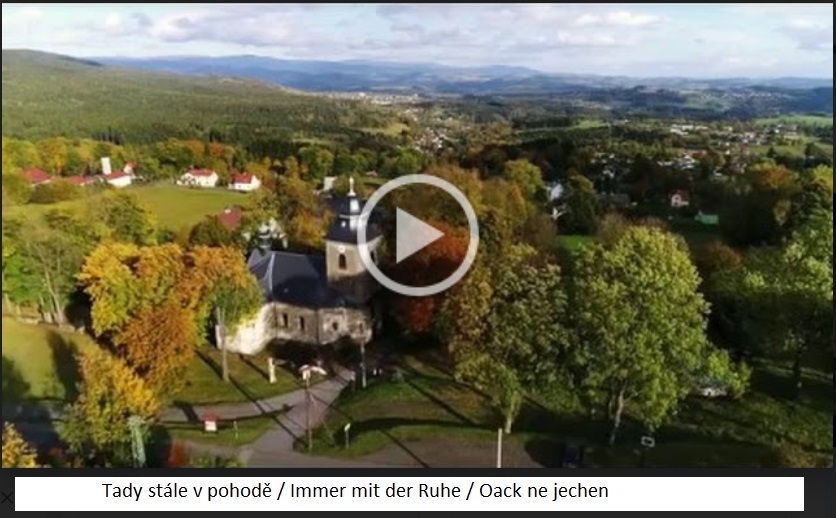Huť
The first record about this locality is from 1350. It was named “Stanovsko” by its first residents, probably from the term “samostatná vesnice” (independent village). The village was completely ravaged by the incursion of the Hussites in 1469. This is the reason that the place is mentioned as being a wasteland in the Malá Skála Property Register from 5th March, 1538.
In the Schürrer´s family chronicle, this record can be found: “In the year of grace 1558, the “Laba” glassworks was built by Hans Schürrer z Waldheimu” (also known as Laaba, Labau or Syřišťov). The name is probably related to the term “syřiti” (to curdle with rennet); “laben” in German. In connection with the new glassworks, the place was later called Hüttendorf, and from this name, the present-day Czech name of Huť was created. The glassworks used to stand in the place of the current village square, under house number 10. In the place of the present-day pub, the seigniorial glassworks master´s manor house and other farm buildings, including stables, used to lie. The rest of these were damaged by the later building of the road from Jablonec nad Nisou to Zásada.
Glassworks from the road from Jistebsko
Glassworks memorial in Stanovsko
The first wooden chapel, built by glassworks master Georg Wander, used to stand near the glassworks. However, the chapel became dilapidated after fifty years. As a result of this, the lords of Malá Skála had a new one built (on the current place), which was consecrated in April 1749 and dedicated to St. Vojtěch. The building has a semi-circular presbytery, a sacristy, and a turret on the roof´s ridge. A statue of St. Vojtěch is placed in the gable wall above the front. The chapel´s altar comes from the middle of the 18th century.
Because of the problem with bringing wood to the glassworks from distant forests, the glassworks was later relocated more deeply into the forests, by the road from Stanovsko to Berany. This glassworks had two furnaces, and was sold to glassworks master Georg Wander in 1679. In those days, the glass village of Labau was located on the gentle southern slope above the Žernovník. The tiny Czech settlement called “Roklí lábské” used to lie in the place where the Žernovník turns to the south (the present name of the place is “V Rokli”) and, also, in Stanovsko, a few glass workers´ families used to live. In 1717, the glass factory became a part of the Malá Skála demesne. However, it was not prospering, so was later sold to Smržovka demesne. Those times were critical for glass workers, but Christian Kunze, who started his business of cutting precious stones there, helped them to escape their poverty. Later, they started producing cut beads and, finally, the first glass button factory was built here in 1857. It was made of wood and used to stand on the rock in the place called V Rokli.
Picture. St. Vojtěch´s statue in the gable wall and St. Vojtěch´s chappel
Until 1871, the local children used to attend the parish school in Šumburk. On 1st July 1871, a single-class school was established, and in 1879, planning permission for the building of the ground floor brick school was granted.
In 1823, Huť became an autonomous village (until the time it used to belong to Maršovice administration), and at the end of 1898, the first daily-opening post and telegraphic office was established. In 1906, a police station was established, which used to maintain public order in Huť, Pěnčín, Jistebsko, Šumburk, Dalešice, Maršovice, and Černá Studnice.
Later, the beautiful Sokol club´s gymnasium was founded, which, nowadays, is administrated by the local Sokol club. An outdoor swimming pool fed by the Žernovník, which flows through the former ponds and the later raceways for the glass workshops and far away to Bratříkov and then to Železný Brod, where it flows into the Jizera river, was also built. In the village centre, a veteran tree grows – European ash, about 300 years old, standing 25 m tall with a trunk girth of around 5 m.
Picture: Snowflakes by the Žernovník stream cover the whole valley from Huť to Bratříkov







